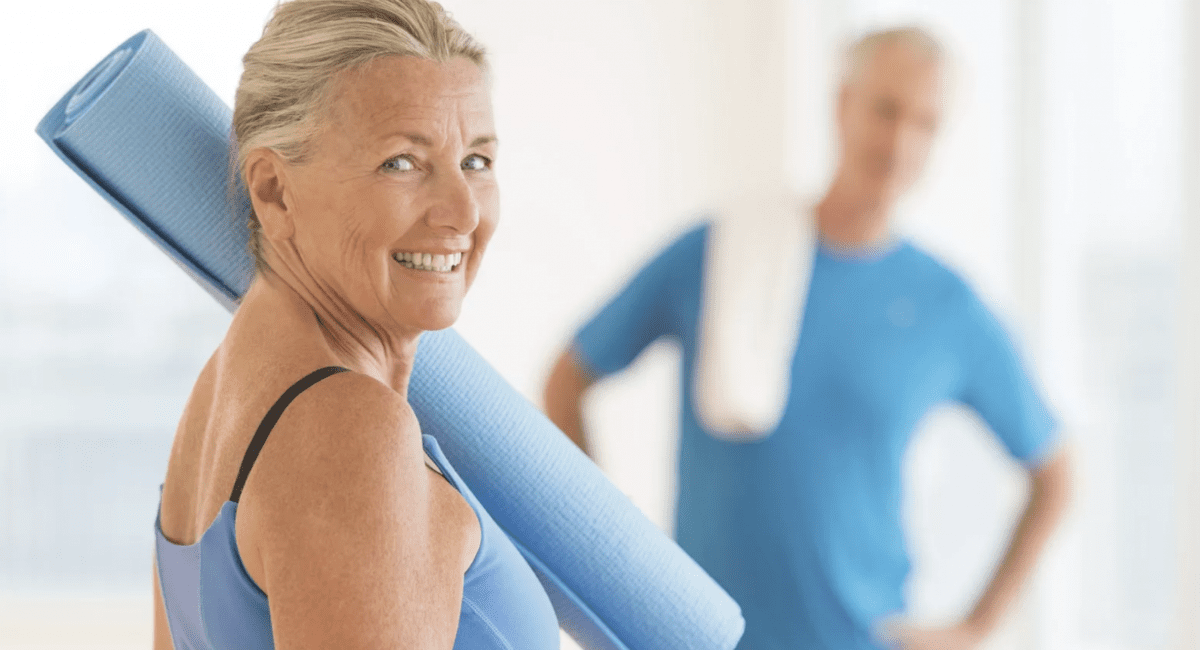According to the Arthritis Foundation, exercise is essential for living with and managing arthritis. Gone are the days when people with arthritis were told to limit their exercise and movement in order to avoid further damaging their joints. Research has shown that a regular exercise routine can reduce inflammation, increase flexibility and greatly improve quality of life for those living with arthritis. While there are certain precautions to take before beginning an exercise program, and a certain amount of educating yourself on what to do or not do, there is no reason for your arthritis to force you to sit on the sidelines.
In this article, we will explore a range of practical exercise tips tailored specifically for individuals with arthritis. Whether you’re dealing with osteoarthritis, rheumatoid arthritis, or another form of this condition, these strategies can help you maintain mobility, reduce pain, and boost your physical and emotional health.
Tip 1: Consult with a Healthcare Professional
Before embarking on any exercise program, it’s crucial to consult with your healthcare provider or a physical therapist who can assess your condition and provide tailored recommendations. They can help you determine the most suitable exercises and intensity levels for your specific situation.
Tip 2: Embrace Low-Impact Activities
Opt for low-impact exercises that minimize stress on your joints while still delivering the benefits of physical activity. Swimming, water aerobics, cycling, and walking are excellent choices. These activities can enhance cardiovascular fitness, strengthen muscles, and improve joint flexibility without exacerbating pain.
Tip 3: Warm Up and Cool Down
Prioritize warm-up and cool-down routines before and after exercising. Gentle stretches, range-of-motion exercises, and light aerobic activity can help prepare your muscles and joints for exercise and prevent injury.
Tip 4: Focus on Flexibility and Range of Motion
Incorporate flexibility exercises into your routine to improve joint range of motion. Yoga and tai chi are fantastic options, as they emphasize gentle movements and can be adapted to your comfort level.
Tip 5: Strengthen Muscles Around the Joints
Muscle weakness can exacerbate arthritis symptoms, so consider strength training exercises that target the muscles surrounding affected joints. Start with light weights or resistance bands and gradually increase intensity over time. Consult with a professional to ensure proper form and technique.
Tip 6: Listen to Your Body
Pay close attention to your body’s signals during exercise. If you experience pain that is more than mild discomfort or if it persists, stop the activity and reassess. It’s essential to find the right balance between pushing your limits and avoiding overexertion.
Tip 7: Stay Hydrated
Proper hydration is crucial for joint health. Ensure you drink enough water before, during, and after exercise to help lubricate your joints and reduce friction.
Tip 8: Use Assistive Devices if Needed
If arthritis affects your mobility, don’t hesitate to use assistive devices like walking aids, joint braces, or shoe inserts. These tools can help relieve pressure on affected joints and make exercise more comfortable.
Tip 9: Stay Consistent
Consistency is key to reaping the long-term benefits of exercise. Create a regular exercise schedule and stick to it. Over time, you’ll likely notice improvements in pain management, joint function, and overall quality of life.
The Arthritis Foundation recommends that every work-out for people with arthritis have at least one of the following elements:
- Flexibility or stretching exercises aimed at increasing/maintaining your range of motion. After warming up, devote at least 15 minutes to stretching–perhaps a yoga class or sequence designed especially for people with arthritis. Don’t push yourself beyond what is comfortable, but hold the stretches for one or two breaths longer than you want in order to make progress. This may be the most important element to an exercise program for people living with arthritis.
- Strength Training. The Arthritis Foundation recommends including some sort of strength training into your exercise program every other day. This helps build up the muscles around your joints, which can take some of the stress off of the joints themselves. Start small! Unless you already have a routine that includes lifting weights, begin with isometric exercises –simply contracting and flexing your muscles. From there you can gradually increase until you are using your own body for resistance, i.e. doing gentle squats and leg lifts. Remember to take a day off in between strength training sessions to give your muscles time to recover. Don’t forget to give your joints the support they need by wearing appropriate braces and using props. For example, if your knees are achy, wear a compression knee brace. Or if the soles of your feet are painful, wear orthotics in your shoes.
- Aerobic Exercise: Aerobic exercises help to elevate your heart rate, make you sweat and contribute to your overall physical and mental wellbeing. Avoid doing anything high impact such as jogging or running. Stick to lower impact exercises like walking, water aerobics, swimming or cycling. Ideally, work up to 30 minutes of aerobic exercise three or four days per week –but start slowly, even five minutes is better than nothing!
Then give yourself five to ten minutes to cool down by slowing your pace and breathing. Soak in a bath with epsom salts to draw out the lactic acid in your muscles and/or ice any sore joints to reduce inflammation.
Arthritis doesn’t have to be an insurmountable obstacle to leading an active and fulfilling life. With the right exercise strategies and a commitment to your well-being, you can manage your arthritis symptoms and enjoy the physical and emotional benefits of an active lifestyle. Always remember to consult with your healthcare provider before beginning any exercise program, and together, you can create a plan that’s tailored to your unique needs and goals.








